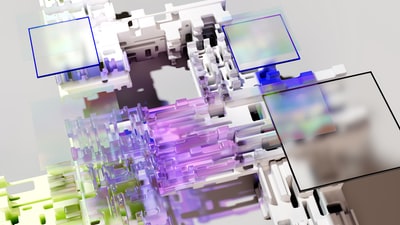With the rise of artificial intelligence and the proliferation of virtual assistants in our daily lives, it seems that there is no turning back from the inevitable integration of technology with human communication. However, this new wave of innovation comes with its own set of daunting challenges, particularly when it comes to security.
AI virtual assistants have become an increasingly attractive target for cybercriminals, with the potential to exploit these systems through impersonation or interception of communications. The question remains: how can we ensure the security of these AI virtual assistants? As technology continues to advance at a rapid pace, it’s becoming increasingly important for us to stay ahead of emerging threats and develop robust solutions that can protect us from the risks that come with AI-powered communication.
“The world is becoming increasingly automated, and with each passing day, it seems like there is a new digital tool designed to make our lives easier. Virtual assistants are now ubiquitous, providing 24/7 assistance to busy individuals with the mere click of a button.
But as more people turn to these AI-powered helpers, concerns surrounding virtual assistant security have grown. From Amazon’s Alexa to Google Assistant, there are several virtual assistants in the market and with the exponential increase of their usage, hackers have become more sophisticated, exploiting vulnerabilities in these systems.
The question then becomes: how can we prevent impersonation attacks on these intelligent agents? It’s no longer enough to rely on traditional security measures, which are simply not designed to account for the nuances and complexities of virtual assistant technology. In order to ensure that our virtual assistants are safe, we must implement AI impersonation prevention solutions that are both robust and resilient.
This is not only crucial for personal privacy but also the security of businesses relying on virtual assistants. The future of AI-powered virtual assistants is bright, but only if they are secure.
“
Table of Contents
Introduction to AI impersonation
In today’s world of Siri, Alexa, and Google Assistant, virtual assistants have become essential tools in our daily lives. However, as they become more common, it’s important to recognize their vulnerabilities to hacking, identity theft, and impersonation – a serious concern for individuals and businesses.
AI impersonation prevention solutions use machine learning and natural language processing to identify and prevent potential threats before they become actual attacks. Cybersecurity for virtual assistants is crucial for protecting personal data and ensuring the integrity of interactions.
As technology advances, it’s important to stay ahead of potential dangers and keep our virtual assistants secure.
Vulnerabilities in virtual assistant technology
Virtual assistants like Siri and Alexa are now a common part of our daily lives. They can do things like setting reminders and ordering groceries, but unfortunately, they’re not completely safe from vulnerabilities that might endanger personal data.
Cybercriminals may use AI technology to pose as virtual assistants and potentially steal sensitive information. Thankfully, the field of AI impersonation prevention solutions is constantly evolving to counteract these dangers.
It’s a crucial step to ensure virtual assistant security and safeguard personal information in this increasingly digital world. While implementing these preventative measures is challenging, keeping our digital assistants safe is worth the investment.
Elements of AI impersonation prevention solutions
As businesses increasingly rely on virtual assistants to communicate with customers, preventing AI impersonation has become a crucial concern. Hackers use AI techniques to impersonate these intelligent machines and access sensitive information.
Implementing AI impersonation prevention solutions can address this issue. These solutions typically consist of three components: machine learning algorithms, a database that stores user information, and an authentication mechanism.
The accuracy and effectiveness of these components rely on their integration. Although implementing these systems can be challenging, it is vital to implement them for secure virtual assistant communication that delivers better and more secure customer experiences.
Benefits and effectiveness of implementing prevention solutions
AI-driven virtual assistants are becoming more prevalent across various industries, but with this comes a rise in cyber threats. These assistants are heavily relied upon to manage daily tasks, making them vulnerable to attacks.
As they gain popularity, cyber attackers are finding new ways to exploit security weak points. Fortunately, AI impersonation prevention solutions can help secure virtual assistants.
Implementing these solutions offers benefits such as reducing response times, improving user experiences, and cost savings. This approach is effective in protecting virtual assistants from cyber threats and maintaining credibility among users.
Many businesses worldwide have already implemented this solution due to its proven efficacy.
Integration and implementation considerations
As digital technology develops, virtual assistants have become essential for daily tasks. But AI-powered systems can be vulnerable to cyberattacks and data breaches.
To prevent this, companies are implementing AI impersonation prevention solutions. However, before integration, questions of balancing security and user experience, as well as impacts on business operations, must be addressed.
While these solutions promise to safeguard data and consumer confidence, staying flexible and vigilant is crucial in the evolving landscape of virtual assistant security.
Future development and advancements in AI impersonation prevention
Everyone wants to know: How can we protect AI virtual assistants? As more people rely on these gadgets and devices, the risk of cybersecurity breaches and impersonation grows. Even though AI impersonation is still new, experts believe it will mature and evolve soon.
To be safe, companies need to act now and implement effective AI impersonation prevention solutions. While it won’t be easy to secure virtual assistants, the potential payoff is huge.
By staying vigilant and flexible, we can take full advantage of AI while keeping our privacy and security intact. The future of AI is exciting, but we need to navigate this technology with caution and care.
Streamline Your Inbox and Reduce Stress with Cleanbox – The Revolutionary Email Management Solution for Virtual Assistants
Dirty and cluttered inboxes can be a source of stress for many people, especially for virtual assistants who have to manage an overwhelming volume of emails across multiple clients. Amidst the countless mundane and irrelevant messages, important and urgent ones are easily missed, leading to misunderstandings, delays, and potentially damaging consequences.
This is where Cleanbox comes in – a game-changing solution that allows virtual assistants to streamline their email experience, helping them to stay on top of their busy schedules and protect themselves from increasingly sophisticated email scams. Cleanbox leverages advanced artificial intelligence technology to efficiently sort through incoming emails, separating the wheat from the chaff, and blocking malicious content.
The result? A cleaner, safer inbox that lets virtual assistants focus on what matters most – their clients.
The Bottom Line
In conclusion, the realm of virtual assistants has undoubtedly come a long way since its inception. With AI at the helm, it is now possible to seamlessly communicate with a digital assistant.
However, with advancements, comes new problems and challenges. AI impersonation is one of the most pressing issues that need to be addressed.
As is often the case, technology is also the answer to technology. Developers are coming up with innovative solutions to protect personal information and prevent AI impersonation.
With cutting-edge technology and a vigilant eye, it’s possible to stay one step ahead of the game. Nevertheless, it remains crucial to stay informed and mindful of security and privacy issues.
While the world becomes more digitally driven each day, we must maintain a balance between progress and regulation. Virtual assistants amass valuable information and help us in many ways.
However, we must also keep in mind that they are only as safe as the technology that powers them. So, let us continue to push technological boundaries while keeping a watchful eye on data privacy and security.



 in Wyoming
in Wyoming